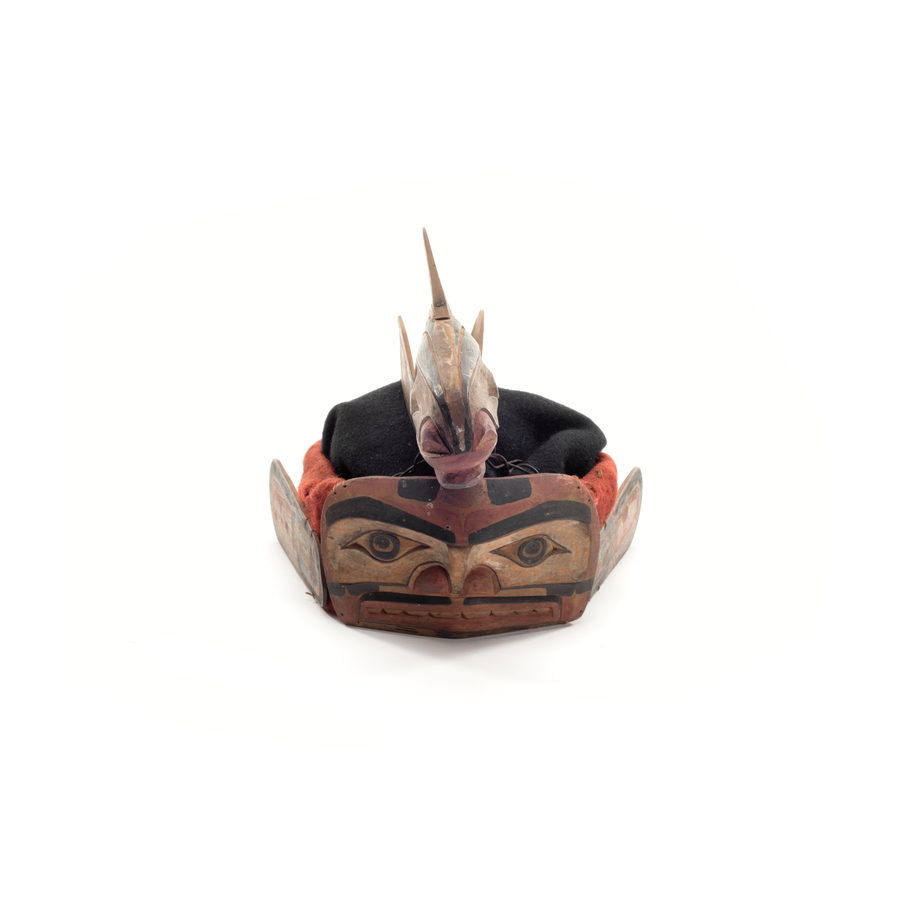Salmon Headdress
Salmon Headdress
This headdress was probably carved by Xi’xa’niyus, also known as Bob Harris, a talented carver of the early 1900’s. A Da’naxda’xw from New Vancouver, Xi’xa’niyus took part in the St. Louis World’s Fair of 1904, with fellow Kwakwaka’wakw Charles Nowell, and five Nuu-chah-nulth, where they performed their songs and dances for the curious visitors (Ford, 1941; see also the Summer 2012 edition of U’mista News).
Owner
Yekutłikalas, Sam Charlie, Mamalilikala (Village Island)
Creator
Xi’xa’niyus, Bob Harris
Catalogue Information
Provenance
Owned by Sam Charlie until its forced surrender to Indian Agent William Halliday on March 25, 1922. Halliday later displayed and photographed the seized pieces at the Parish Hall in Alert Bay. After doing an inventory, he crated the items in June, and at the end of September he shipped them to Edward Sapir at the National Museum of Man (now the Canadian Museum of History). They remained the property of the NMM until their repatriation by the U’mista and Nuyumbalees Cultural Societies in 1979. In 1995 Sam Charlie's daughter, Mary Beans (nee Charlie) requested her father's regalia be transferred from Nuyumbalees to U'mista for display.
Materials
Wood, Cedar; Cardboard; Fabric, Wool; Metal, Wire; Paint
Dimensions
25.0cm x 16.5cm x 40.0cm
Accession Number
95.03.011
Physical Description
The headring itself consists of a bundle of cedar bark covered with woolen fabric, to which is attached five carved pieces which form the salmon: a humanoid face with a hooked snout, flanked by two side fins decorated with ovoid designs, and terminating with two flat pieces representing the tail. It is topped by a three-dimensional carved whale which presents the characteristic features of a sea-animal. The salmon and the whale are decorated with fine ovoids and inner ovoids painted black, red and black U and split U shapes as well as with cross hatchings. The workmanship of Xi’xa’niyus is a good example of Kwagu’ł style. (pg. 180, Mauzé manuscript c.1998).
Carved and painted whale headdress consisting of six wooden pieces. The whale figure, which is on top, is attached to a fabric and wooden headpiece with wire. The whale is missing its tail. Black, red, green, white.

 Video Downloads
Video Downloads